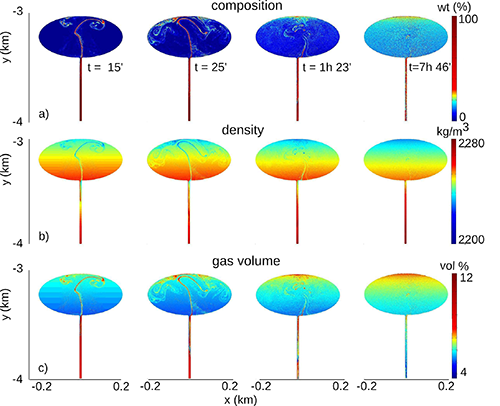Magma Chamber Dynamics at the Campi Flegrei Caldera, Italy

Montagna C.P., P. Papale, A. Longo (2022).
Chapter – Active Volcanoes of the World – book series (AVOLCAN), https://doi.org/10.1007/978-3-642-37060-1_7
Abstract
The Campi Flegrei caldera volcanic system is certainly a remarkable case study of magma chamber dynamics. Its magmatic and volcanic history appears to have been largely driven by magma chamber processes like fractional crystallisation, magma mixing, and volatile degassing. These processes have been intensely investigated with a variety of approaches that are described in many chapters of this book, and more specifically, in Chaps. An Evolutionary Model for the Magmatic System of the Campi Flegrei Volcanic Field (Italy) Constrained by Petrochemical Data; Rheological Properties of the Magmas Feeding the Campi Flegrei Caldera (Italy) and Their Influence on Mixing Processes. In this chapter, physical modelling and numerical simulations are employed in order to study the dynamics of magma convection and mixing in a vertically extended, geometrically complex, compositionally heterogeneous magmatic system representing a schematic simplification of an overall picture emerging from previous studies at Campi Flegrei caldera. Although clearly an idealisation, a number of first order characteristics of possible real magmatic systems at Campi Flegrei caldera are accounted for. They include the more chemically evolved, partially degassed nature of magmas emplaced at shallow depths, and the likely occurrence of multiple reservoirs with different depth, size and shape which can be connected at certain stages during system evolution. If that happens, deeper, CO2-rich magmas may rise and rejuvenate the shallow magmas.


Devi effettuare l'accesso per postare un commento.